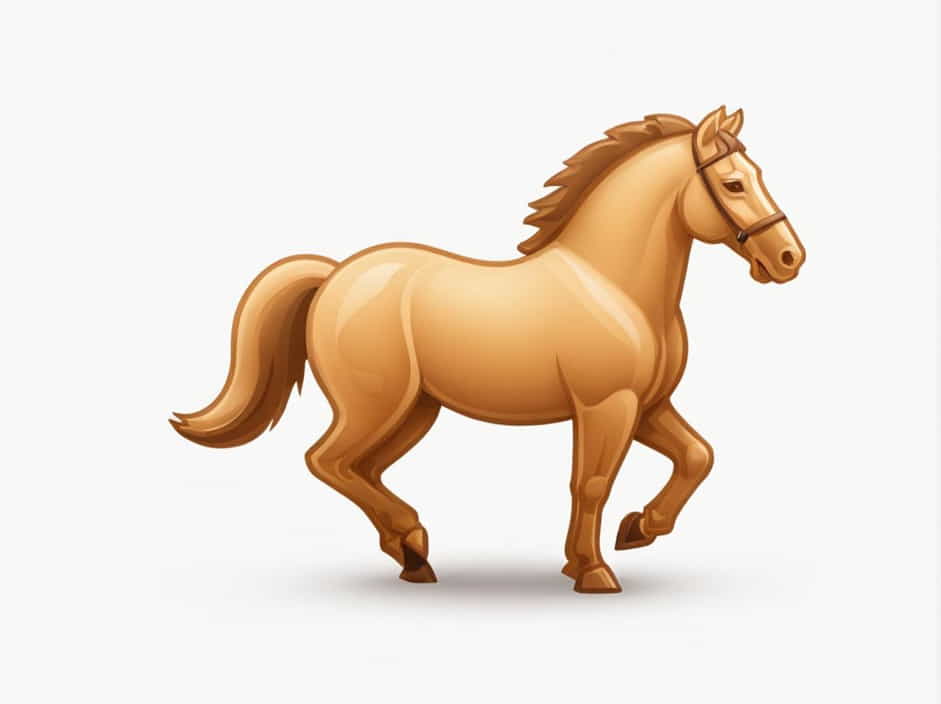A crupper is an important piece of tack designed to prevent a saddle or harness from sliding forward. It is commonly used in driving, endurance riding, and horseback riding disciplines where saddle stability is crucial.
Made from leather, synthetic materials, or padded fabric, a crupper consists of a strap that loops under the horse’s tail, attaching to the saddle or harness. It is particularly useful for horses with low withers or sloping backs, ensuring that the tack stays in place during movement.
This topic explores the function of a crupper, its benefits, how to fit one properly, and important care tips to maximize its effectiveness.
What Is a Crupper?
A crupper is a strap that runs from the back of the saddle or harness to a loop under the horse’s tail. It helps prevent tack from sliding forward, especially on hilly terrain or with certain horse conformations.
Key Features of a Crupper
- Tail Loop – Soft, rounded loop that fits under the horse’s tail.
- Adjustable Strap – Allows proper tension for comfort and effectiveness.
- Attachment Point – Connects to the saddle or harness for stability.
Why Use a Crupper?
1. Prevents Saddle and Harness Slippage
For horses with low withers, a round barrel, or a sloping back, a saddle may slide forward during movement. A crupper helps keep the saddle in place, ensuring a safe and comfortable ride.
2. Essential for Driving and Carriage Horses
When pulling a carriage or cart, a horse’s movement can cause the harness to shift forward. A crupper prevents this, keeping the harness balanced and secure.
3. Useful for Riding on Hilly Terrain
Riding uphill increases the risk of a saddle slipping forward. A crupper provides extra security, preventing discomfort for both horse and rider.
4. Helps Ponies and Small Horses
Ponies and some small horses often have rounded backs and low withers, making them more prone to saddle slippage. A crupper ensures their tack stays correctly positioned.
Types of Cruppers
1. Leather Crupper
- Traditional and durable.
- Requires regular conditioning to prevent cracking.
- Ideal for show horses and traditional riding.
2. Synthetic Crupper
- Made from nylon or biothane for easy maintenance.
- Water-resistant and suitable for trail riding.
- Does not require as much conditioning as leather.
3. Padded or Soft Crupper
- Designed for extra comfort, reducing pressure on the tail.
- Ideal for sensitive horses prone to rubbing.
- Often used in endurance riding or long-distance travel.
How to Fit a Crupper Correctly
A properly fitted crupper ensures comfort and effectiveness. An improperly fitted one can cause irritation or restrict movement.
1. Attach to the Saddle or Harness
- Most saddles have built-in attachment points at the cantle.
- For harnesses, attach to the backband or breeching strap.
2. Adjust the Length Properly
- The crupper should be snug but not too tight.
- If too loose, it won’t prevent slippage effectively.
- If too tight, it can cause discomfort and tail soreness.
3. Position the Tail Loop Correctly
- Gently lift the horse’s tail and slide the loop underneath.
- Ensure the loop sits comfortably at the tail base, not pinching or pulling.
4. Check for Comfort
- The horse should be able to move naturally without resistance.
- Observe for any signs of rubbing or irritation after riding.
Signs That a Horse Needs a Crupper
1. Saddle Slipping Forward
If the saddle frequently shifts forward, especially when riding uphill, a crupper can help maintain proper positioning.
2. Difficulty Keeping a Harness in Place
For driving horses, a harness that slides forward affects balance and control. A crupper keeps the harness stable.
3. Discomfort or Resistance While Riding
Some horses may pin their ears, swish their tails, or resist movement when the saddle moves uncomfortably. A crupper can alleviate pressure and improve comfort.
Caring for a Crupper
1. Regular Cleaning
- Leather: Clean with saddle soap and condition with leather oil.
- Synthetic: Wipe with water and mild soap for easy maintenance.
2. Inspect for Damage
Check regularly for cracks, fraying, or worn stitching. Replace if weak or damaged to prevent failure during riding.
3. Store Properly
- Keep leather cruppers conditioned and stored in a cool, dry place.
- Hang synthetic cruppers to prevent unnecessary bending or warping.
Common Mistakes to Avoid
1. Over-Tightening the Crupper
A too-tight crupper can cause tail soreness and restricted movement. Always adjust it for a comfortable yet secure fit.
2. Using on a Horse That Doesn’t Need It
Not all horses require a crupper. If a horse’s saddle fits well without slipping, adding a crupper may be unnecessary.
3. Ignoring Signs of Discomfort
Horses may show tail clamping, excessive swishing, or stiffness if the crupper is uncomfortable. Always observe their reaction after fitting one.
A crupper is a valuable tool for riders and drivers who need to prevent saddle or harness slippage. Whether used for driving horses, trail riding, or ponies with round backs, it enhances stability, comfort, and safety.
Choosing the right crupper, ensuring a proper fit, and maintaining it correctly are essential for keeping your horse comfortable and performing at its best.
